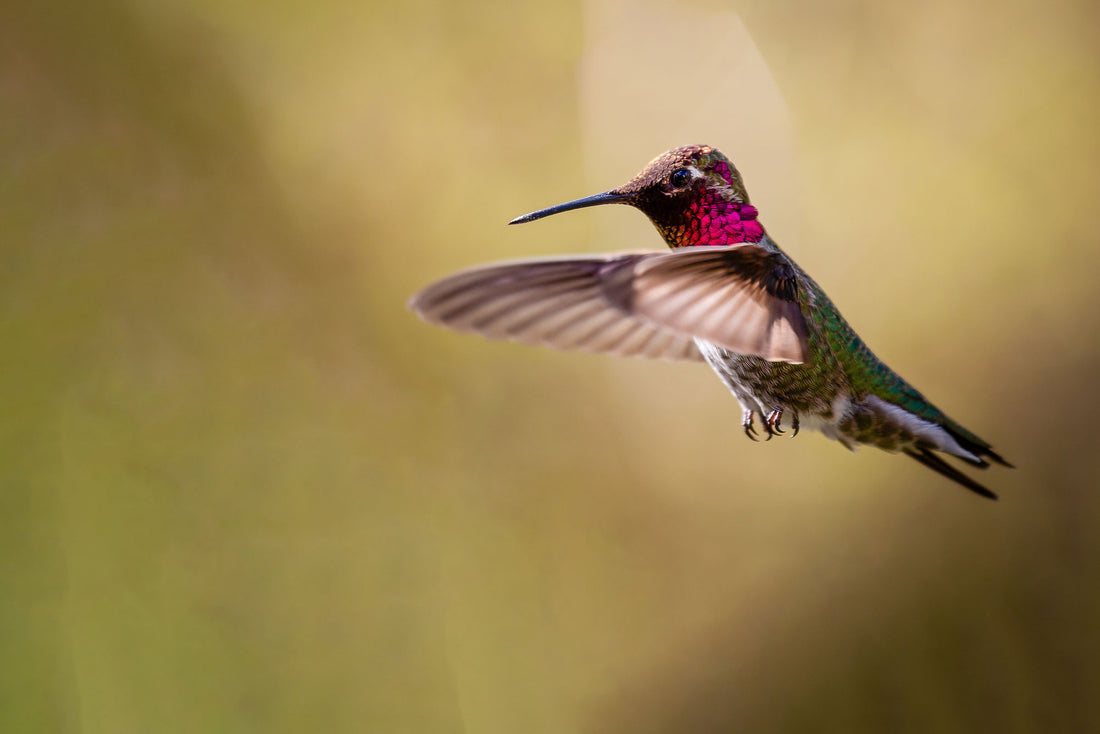
From Pigments to Structure: Decoding the Colors of Hummingbird Feathers
Share
Hummingbirds are renowned for their vibrant and captivating feathers. From the stunning red throat patch of the Ruby-throated Hummingbird to the iridescent hues displayed by various species, these tiny birds exhibit a remarkable array of colors. But how do hummingbirds achieve such dazzling displays? The answer lies in the physics of light interaction and the intricate structure of their feathers.
1. Introduction
Hummingbirds have long fascinated bird enthusiasts and scientists alike. Their ability to hover mid-air and their vibrant plumage make them a sight to behold. In this article, we will delve into the fascinating world of hummingbird feathers, exploring how their colors are produced and the factors that contribute to their remarkable diversity.
2. The Physics of Hummingbird Colors
The colors of hummingbird feathers are intricately linked to the physics of light interaction. The iridescence observed in these feathers is a result of light scattering and reflection. Hummingbird feathers contain hollow, flattened melanin granules arranged in stacked rows. When light enters the feather, certain colors are absorbed by the melanin granules while others, such as red, are scattered back to the observer's eye. The angle at which light passes through the granule stacks affects the distance light travels, resulting in different colors being perceived.
3. Pigments and Feather Structure
Feather colors in birds can be attributed to two main factors: pigments and feather structure. Pigments, such as carotenoids, melanins, and porphyrins, contribute to coloration independently of feather structure. Carotenoid pigments, for instance, are responsible for the vibrant colors seen in the throat and chest feathers of male Blackburnian Warblers. On the other hand, the structure of the feathers themselves can also refract and reflect light, creating additional coloration effects.
4. Microstructures and Feather Coloration
Bird feathers exhibit a wide range of coloration, thanks to various microstructures present in the feathers. These microstructures can be classified into three types: thin-layer interference, melanin granules, and amorphous networks. Feather coloration is determined during the feather development process and can vary based on factors such as body part, age, sex, and season. The intricate patterns and diversity of feather colors play a crucial role in the survival strategies of birds.
5. The Role of Diet and Pigments
While birds lack specialized colorful cells found in other vertebrates, they obtain pigments from their diet. The pigments ingested by hummingbirds contribute to the coloration of their feathers. Carotenoids, for example, are obtained through the consumption of nectar and are responsible for the vibrant hues seen in their plumage. The availability of certain pigments in their diet can influence the color diversity observed in hummingbirds.
6. Hummingbird Feather Diversity
Hummingbirds exhibit an extraordinary range of feather colors and iridescence. Each species showcases unique hues and arrangements, from the brilliant red throat of the Ruby-throated Hummingbird to the magenta and royal purple hues of species like Allen's, rufous, Anna's, and Costa's hummingbirds. The diversity of colors in hummingbird feathers is a captivating subject that continues to be explored by experts and researchers.
7. Unraveling the Genetics of Feather Coloration
The genetics underlying feather coloration in hummingbirds is an area of active research. Scientists are studying the unique characteristics of hummingbird feathers, such as melanosomes, structures within feather cells responsible for producing pigments. By examining a wide range of hummingbird species, researchers aim to gain deeper insights into the factors influencing coloration and the reasons for the remarkable diversity of hues observed in these captivating birds.
8. The Evolutionary Significance of Color Diversity
The vibrant colors exhibited by hummingbird feathers serve various purposes, including communication and mate attraction. Evolutionary biologists study the physics behind these colors to uncover patterns of color evolution and diversity across bird species. The interplay between selection, physiological mechanisms, and developmental factors shapes the color gamut observed in hummingbird plumage.
9. Feather Pigments and Toxins
In addition to pigments, certain bird species incorporate toxins into their feathers, adding another layer of complexity to their coloration. Porphyrins, a type of pigment, can produce red, brown, green, and pink hues in feathers. They are synthesized by birds using amino acids and have a structural similarity to hemoglobin. Porphyrins appear bright red under ultraviolet light, which is visible to birds due to their unique color vision. This unique adaptation can be observed in birds like the Hooded Pitohui and Variable Pitohui from New Guinea.
10. The Extraordinary Vision of Hummingbirds
Hummingbirds possess remarkable color vision, allowing them to perceive hues beyond the visual range of humans. Their enhanced vision is attributed to the presence of a fourth cone type, enabling them to perceive ultraviolet light. This exceptional visual capability influences their perception of colors and contributes to the selection pressures shaping their coloration.
11. Conclusion
Hummingbird feathers are a testament to the intricate interplay between pigments, feather structure, and light physics. The vibrant colors and iridescence observed in these tiny birds serve multiple purposes and are a result of evolutionary adaptations. By decoding the colors of hummingbird feathers, scientists gain insights into the mechanisms behind their remarkable diversity, shedding light on the fascinating world of avian coloration.
